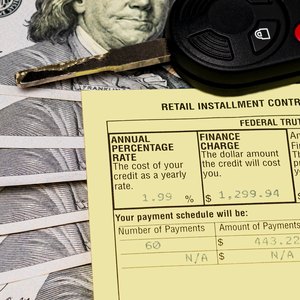
According to the Consumer Financial Protection Bureau (CFPB), the annual percentage rate (APR) is the total cost of borrowing money based on yearly calculations. It includes both the interest rate charged and any other fees associated with borrowing from lenders, such as origination and agency fees. Lenders usually express it as a percentage.
It is worth noting that the Truth in Lending Act (TILA) requires lenders to transparently disclose all important terms and conditions of the credit they intend to give you, explains the CFPB. And the APR is one of the disclosures lenders must make before you sign on the dotted line.
Generally, APRs apply to loans associated with credit cards, mortgages or vehicles. Plus the annual rate comes in several forms.
Types of APRs
Several types of annual percentage rates exist. They depend on what kind of loan lenders intend to give you and your credit scores. Below are the different APRs you should know.
Balance Transfer APR
Suppose you have balances on one or more credit cards. A credit card issuer or other lender may offer you the chance to move your qualified debt from existing credit cards or other types of loans to their credit cards so you can consolidate your debt and simplify your payments. They may do so at a specified APR, whose value may differ from what is already being charged.
In that case, the rate the credit card companies offer to change your credit accounts is known as a balance transfer APR.
Introductory or Promotional APR
If the lenders are promoting new credit cards, they may offer an introductory or promotional APR. Typically, introductory APRs tend to be time-limited. However, the promotional credit card APRs can be as low as 0 percent, making it easier for you to pay off what you owe faster and at a lower cost – as long as you pay off the balance before the grace period is over and the due date arrives.
Purchase APR
Purchase APRs apply to any new purchases you make online, in-person or via the phone using your credit cards.
Cash Advance APR
Some lenders may allow eligible credit card holders to immediately withdraw money in the form of cash, depending on the available credit card balance. However, that cash advance will attract a higher rate compared to the purchase APR. That rate is known as a cash advance APR.
Penalty APR
When you fail to stick to the terms and conditions of your loan and end up making late payments or defaulting, you may be charged a different APR for a specified period. That APR is known as a penalty APR and is usually higher than the standard rate.
How to Calculate APR
You can calculate the annual percentage rate manually using a standard formula or by using an online calculator. It depends on the method you want to use.
APR Formula
Below is the annual percentage rate formula:
APR = ((Interest + Fees/Principal)/n)) * 365 * 100 percent
Where:
- Interest = total number of interest payments made during the loan term
- Fees = any other fees, such as origination fees, associated with borrowing the loan
- Principal = loan amount that you actually borrow from the lender
- N= number of days within the loan term
APR Calculation Example
Suppose Mary borrows $100,000 for 10 years at a rate of 4 percent. Also, suppose the lender charges her additional fees to the tune of $4,000. Based on the numbers given, you can calculate the APR.
First, you need to calculate the total amount of interest she will pay. You can use the simple interest formula:
A= P(1+RT)
Where: A = accrued amount, P = principal, R = simple interest rate, T = loan term.
Therefore:
A = $100,000(1+0.04*10) = $100,000(1.4) = $140,000
So:
Interest accrued = A-P = $140,000-$100,000 = $40,000.
The $40,000 interest then forms the basis for the APR formula.
Therefore:
APR = (($40,000+$4,000)/$100,000)/3650) * 365 * 100 percent
APR = 4.4 percent
In this case, the actual annual percentage rate is 4.4 percent, which is 0.4 percent higher than the interest rate quoted. And that is because of the other costs associated with the loan.
APR FAQs
Here are some answers to frequently asked questions about APR:
What Does APR Stand for?
APR stands for annual percentage rate. It is the total cost of borrowing money from lenders, including both interest and any other loan fees.
What Is a Good APR Rate?
The average APR varies depending on the kind of loan you need. According to the Federal Reserve, the average APR in the third quarter of 2022 was 18.43 percent for credit cards.
Ideally, you should aim for promotional APRs of 0 percent. However, lower APRs compared to the prevailing rates are usually fair, while higher APRs than the average mean you are being overcharged.
Typically, the federal funds rate determines the prime rate, which in turn determines how financial institutions will set the APRs.
Is APR the Same as APY?
No. Annual percentage yield (APY) refers to the yearly rate of return on your investment in a fixed savings account. The rate of interest is different from APR because it applies to money that comes into your account, instead of money that goes to lenders. Plus, it factors in compound interest.
References
Writer Bio
I hold a BS in Computer Science and have been a freelance writer since 2011. When I am not writing, I enjoy reading, watching cooking and lifestyle shows, and fantasizing about world travels.

